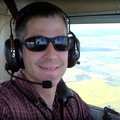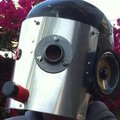-
Hack Chat Transcript, Part 1
06/10/2020 at 20:07 • 0 comments![]() Hi everyone, welcome to this week's Hack Chat. Dan Maloney here, I'll be moderating for today's chat with Erika Earl, who worked with the JPL team that designed a ventilator for COVID-19 response in just 37 days. I'm not sure I saw her log on yet, though - you out there, Erika?
Hi everyone, welcome to this week's Hack Chat. Dan Maloney here, I'll be moderating for today's chat with Erika Earl, who worked with the JPL team that designed a ventilator for COVID-19 response in just 37 days. I'm not sure I saw her log on yet, though - you out there, Erika?![]() Hmmm, guess not. Talk amongst yourselves while I track Erika down
Hmmm, guess not. Talk amongst yourselves while I track Erika down![]() :)
:)![]() Ta-da!
Ta-da!![]() Hi Erika, welcome!
Hi Erika, welcome!![]() Greetings everyone
Greetings everyone![]() Hi All, my internet connection is acting up
Hi All, my internet connection is acting up![]() helloo
helloo![]() Here from my phone! ^_^
Here from my phone! ^_^![]() Ouch! We appreciate your dedication, and we'll do the best we can.
Ouch! We appreciate your dedication, and we'll do the best we can.![]() So if you can, Erika, maybe you can tell us a little about yourself and how you came to be involved in this project
So if you can, Erika, maybe you can tell us a little about yourself and how you came to be involved in this project![]() Sure! I am audio electrical engineer, sound technician, and hardware developer. I was invited to the JPL team to consult on parts procurement and laboratory design for rapid scalable manufacture. NASA is used to designing 1 & 2 of something over a long period of time so they invited some outside professional partners to support the project for high volume production.
Sure! I am audio electrical engineer, sound technician, and hardware developer. I was invited to the JPL team to consult on parts procurement and laboratory design for rapid scalable manufacture. NASA is used to designing 1 & 2 of something over a long period of time so they invited some outside professional partners to support the project for high volume production.![]() That's an interesting angle that I hadn't thought of - their expertise is really onesies and twosies builds. Was there a "culture shock" when they realized they had to build something that could be manufactured in bulk?
That's an interesting angle that I hadn't thought of - their expertise is really onesies and twosies builds. Was there a "culture shock" when they realized they had to build something that could be manufactured in bulk?![]() Yes, definitely!
Yes, definitely!![]() For reference, this is what they built:
For reference, this is what they built:![]()
https://hackaday.com/2020/05/01/fda-approves-ventilator-designed-by-nasas-jet-propulsion-laboratory/
FDA Approves Ventilator Designed By NASA's Jet Propulsion Laboratory
Yesterday NASA's Jet Propulsion Laboratory announced that their ventilator design has received Emergency Use Authorization from the US Food and Drug Administration. This paves the way for the design to be manufactured for use in the treatment of COVID-19 patients.
![]() I think the team really adapted well which is proven by the fact there are not only one but two designs that have been EUA authorized and FDA approved. One for traditional hospitals and one for field hospitals.
I think the team really adapted well which is proven by the fact there are not only one but two designs that have been EUA authorized and FDA approved. One for traditional hospitals and one for field hospitals.![]() @Erika Earl This is very interesting - that they saw the need for help to shift their thinking and approach for both RAPID development and SCALABLE development. How did they find you and the others? Friend of a friend connections, or is this a service that is advertised?
@Erika Earl This is very interesting - that they saw the need for help to shift their thinking and approach for both RAPID development and SCALABLE development. How did they find you and the others? Friend of a friend connections, or is this a service that is advertised?![]() I'm curious about the cost. I know there were different projects targeting different price points/features for ventilators, not sure if that HaD article mentions the final target cost? Is that part of your roles in taking this to production, Erika?
I'm curious about the cost. I know there were different projects targeting different price points/features for ventilators, not sure if that HaD article mentions the final target cost? Is that part of your roles in taking this to production, Erika?![]() My friend Michelle Easter is a Mechatronics Engineer at JPL and was a lead on the Vital project recommended I be brought in to support the team early on. She and I have worked on hardware products and projects together for the last several years and she was aware of my unique background and thought I could help.
My friend Michelle Easter is a Mechatronics Engineer at JPL and was a lead on the Vital project recommended I be brought in to support the team early on. She and I have worked on hardware products and projects together for the last several years and she was aware of my unique background and thought I could help.![]() Nice!
Nice!![]() Coming from a commercial hardware development background, I am well versed in costs and the need to make a product both inexpensive and still meet the quality standards and regulatory requirements.
Coming from a commercial hardware development background, I am well versed in costs and the need to make a product both inexpensive and still meet the quality standards and regulatory requirements.![]() For the latecomers - Erika is logged in from her phone today because of a dodgy internet connection, so take pity - I suspect her thumbs are working as fast as they can!
For the latecomers - Erika is logged in from her phone today because of a dodgy internet connection, so take pity - I suspect her thumbs are working as fast as they can!![]() From your Hackaday profile: ..".& hacking away at my first chip design at night." Not sure when that was written, but can you tell us about your current design projects?
From your Hackaday profile: ..".& hacking away at my first chip design at night." Not sure when that was written, but can you tell us about your current design projects?![]() @Chris Gammell we needed to make sure the projected cost came in under 3k per unit.
@Chris Gammell we needed to make sure the projected cost came in under 3k per unit.![]() OK, cool. I had seen some that were pushing for really low cost, so that helps to understand the range you were working with. How has it been sourcing parts in the world of COVID? Are there medical grade parts you need to seek out?
OK, cool. I had seen some that were pushing for really low cost, so that helps to understand the range you were working with. How has it been sourcing parts in the world of COVID? Are there medical grade parts you need to seek out?![]() What makes these ventilators different from any others on the market is the target features specifically designed to support a COVID 19 patient. The functionality and interface had to be simple to avoid training time for the doctors.
What makes these ventilators different from any others on the market is the target features specifically designed to support a COVID 19 patient. The functionality and interface had to be simple to avoid training time for the doctors.![]() Aren't these vents intended to be "bridge vents", to be used only until the patient can be switched to a full-featured vent?
Aren't these vents intended to be "bridge vents", to be used only until the patient can be switched to a full-featured vent?![]() My current design projects are focused on realtime ambisonic decoding and interaction for XR and VR applications. The chip stuff is all related to clocking and synchronization.
My current design projects are focused on realtime ambisonic decoding and interaction for XR and VR applications. The chip stuff is all related to clocking and synchronization.![]() @Dan Maloney no actually, these ventilators are capable of supporting the most critically ill patients.
@Dan Maloney no actually, these ventilators are capable of supporting the most critically ill patients.![]() Ah, my bad. Thanks for clarifying
Ah, my bad. Thanks for clarifying![]() They just don't have as many features as some of the others.
They just don't have as many features as some of the others.![]() ^_^
^_^![]() What kind of expertise did you bring on the team?
What kind of expertise did you bring on the team?![]() What features did you have to leave aside, to focus on the main ones? (If you did)
What features did you have to leave aside, to focus on the main ones? (If you did)![]() I think being able to seamlessly communicate between design team, production team, regulatory, QA, outside suppliers, OEM/ODms were some of the reasons why I was brought on.
I think being able to seamlessly communicate between design team, production team, regulatory, QA, outside suppliers, OEM/ODms were some of the reasons why I was brought on.![]() What kinds of problems have you run into sourcing the more specific components like pressure transducers and such? I guess in line with @Chris Gammell's question. I know we ran into issues where we could find like 13 suitable PNs in the supply chain, and only one had any sizable inventory at only a couple hundred. It sounds like designing around that kind of bottleneck was a specific intent of the project?
What kinds of problems have you run into sourcing the more specific components like pressure transducers and such? I guess in line with @Chris Gammell's question. I know we ran into issues where we could find like 13 suitable PNs in the supply chain, and only one had any sizable inventory at only a couple hundred. It sounds like designing around that kind of bottleneck was a specific intent of the project?![]() These are all such fantastic questions! Please beat with me a little as I reply from my phone. I will get to them all.
These are all such fantastic questions! Please beat with me a little as I reply from my phone. I will get to them all.![]() Okay, don't beat me. Bear with me!
Okay, don't beat me. Bear with me!![]() We really appreciate the extra effort here, Erika.
We really appreciate the extra effort here, Erika.![]() Yeah, that's a lot of phone typing!
Yeah, that's a lot of phone typing!![]() @zacharia.mesbah the JPL design team did such anti credible job working with Doctors to determine early on which features would be needed. There was zero feature creep. It was clear from the start.
@zacharia.mesbah the JPL design team did such anti credible job working with Doctors to determine early on which features would be needed. There was zero feature creep. It was clear from the start.![]() That's great! Thank you for your answer
That's great! Thank you for your answer![]() What kind of project methodology does the team use- an agile approach or something more along the lines of waterfall? Or something else?
What kind of project methodology does the team use- an agile approach or something more along the lines of waterfall? Or something else?![]() @Nicolas Tremblay I also got to get my hands on the hardware and build / electronically assemble some of the prototype interface boards for the team.
@Nicolas Tremblay I also got to get my hands on the hardware and build / electronically assemble some of the prototype interface boards for the team.![]() Were you able to meet in person? Or was this all done remotely?
Were you able to meet in person? Or was this all done remotely?![]() @alexwhittemore great question! The biggest challenge for me was navigating those supplychain bottlenecks with the team. We relayed heavily on our /my existing networks and relationships with suppliers and pivoted to other markets like refrigeration and gaming for some parts. We didn't want to disrupt the existing medical supplychain and so we had to be sure when talking with suppliers we communicated that.
@alexwhittemore great question! The biggest challenge for me was navigating those supplychain bottlenecks with the team. We relayed heavily on our /my existing networks and relationships with suppliers and pivoted to other markets like refrigeration and gaming for some parts. We didn't want to disrupt the existing medical supplychain and so we had to be sure when talking with suppliers we communicated that.![]() @Dan Maloney all remote! There was a very small team at JPL and they have these cool robots the doctors used to virtually attend for tests etc
@Dan Maloney all remote! There was a very small team at JPL and they have these cool robots the doctors used to virtually attend for tests etc![]() For rapid prototyping, I'm curious what kind of production capabilities you have in house vs. what kind of production capabilities you outsource. (ie do you have your own laser cutters, pcb mills, 3d-printers, etc, or do you have companies you work with that have fast turn-around times)
For rapid prototyping, I'm curious what kind of production capabilities you have in house vs. what kind of production capabilities you outsource. (ie do you have your own laser cutters, pcb mills, 3d-printers, etc, or do you have companies you work with that have fast turn-around times)![]() So I guess most of your "critical path" part bottlenecks were worked around by brute force talking to actual suppliers manually?
So I guess most of your "critical path" part bottlenecks were worked around by brute force talking to actual suppliers manually?![]() @back7.co I am almost certain we developed a whole new way to work. It was truly unprecedented for me and I believe for JPL as well. Every single person on the team from the technicians to upper management were all in constant and controlled communication. We protected people's time and swapped hats when necessary. It was so incredible to be apart of that and witness just how adaptive all of those engineers are.
@back7.co I am almost certain we developed a whole new way to work. It was truly unprecedented for me and I believe for JPL as well. Every single person on the team from the technicians to upper management were all in constant and controlled communication. We protected people's time and swapped hats when necessary. It was so incredible to be apart of that and witness just how adaptive all of those engineers are.![]() @alexwhittemore absolutely. We identified the key and critical components early on and made sure to back them up with 2and and 3rd alternatives.
@alexwhittemore absolutely. We identified the key and critical components early on and made sure to back them up with 2and and 3rd alternatives.![]() Do you imagine that will lead to a permanent change in the way NASA does design teams? Or do they think this was applicable only because of the pandemic circumstances?
Do you imagine that will lead to a permanent change in the way NASA does design teams? Or do they think this was applicable only because of the pandemic circumstances?![]() The total design has less than 300 parts. Including the housing.
The total design has less than 300 parts. Including the housing.![]() @Josh re: rapid prototyping JPL has everything to produce in house. Due to this unique situation since only a critical few engineers were authorized to be on site some assemblies and injected molded parts were outsourced.
@Josh re: rapid prototyping JPL has everything to produce in house. Due to this unique situation since only a critical few engineers were authorized to be on site some assemblies and injected molded parts were outsourced.![]() Thanks! Must be pretty nice to have everything in house!
Thanks! Must be pretty nice to have everything in house!![]() @Dan Maloney I do believe this project will lead to permanent change there.
@Dan Maloney I do believe this project will lead to permanent change there.![]() To be a little more clear, the project inspired a review internally that I believe will lead to some permanent solutions for them moving forward.
To be a little more clear, the project inspired a review internally that I believe will lead to some permanent solutions for them moving forward.![]() Was there something about the JPL team, perhaps process or engineering knowledge, that led to medical certification more easily?
Was there something about the JPL team, perhaps process or engineering knowledge, that led to medical certification more easily?![]() We're up to the top of the hour, and we need to let Erika get back to work if she needs to. I know we had some technical difficulties, so feel free to hang around if you'd like Erika - the Hack Chat is always open.
We're up to the top of the hour, and we need to let Erika get back to work if she needs to. I know we had some technical difficulties, so feel free to hang around if you'd like Erika - the Hack Chat is always open.![]() @axelrod all of that plus they have regulatory and compliance engineers reviewing throughout the process and testing at every stage. Everyone worked in tandem and I am almost positive everyone on the team was an engineer including upper management and the business folks.
@axelrod all of that plus they have regulatory and compliance engineers reviewing throughout the process and testing at every stage. Everyone worked in tandem and I am almost positive everyone on the team was an engineer including upper management and the business folks.![]() I'll just say my "official" thanks to you and to everyone for attending today. Personally, I'm excited that NASA is learning new ways to do things - maybe I will get to work on a spacecraft one of these days after all.
I'll just say my "official" thanks to you and to everyone for attending today. Personally, I'm excited that NASA is learning new ways to do things - maybe I will get to work on a spacecraft one of these days after all.![]() @Erika Earl was this an APPROVAL, or an emergency use authorization?
@Erika Earl was this an APPROVAL, or an emergency use authorization?![]() Erika! thanks so much for your thoughts! We didn't get a chance to meet in person but I was the UI design lead on the project. Becuase so many of us were remote I wanted to tune into the hackchat to hear other people's experiences. (also, if people have UI questions I'd be happy to answer for a bit.)
Erika! thanks so much for your thoughts! We didn't get a chance to meet in person but I was the UI design lead on the project. Becuase so many of us were remote I wanted to tune into the hackchat to hear other people's experiences. (also, if people have UI questions I'd be happy to answer for a bit.)
 Lutetium
Lutetium Hi everyone, welcome to this week's Hack Chat. Dan Maloney here, I'll be moderating for today's chat with Erika Earl, who worked with the JPL team that designed a ventilator for COVID-19 response in just 37 days. I'm not sure I saw her log on yet, though - you out there, Erika?
Hi everyone, welcome to this week's Hack Chat. Dan Maloney here, I'll be moderating for today's chat with Erika Earl, who worked with the JPL team that designed a ventilator for COVID-19 response in just 37 days. I'm not sure I saw her log on yet, though - you out there, Erika?







